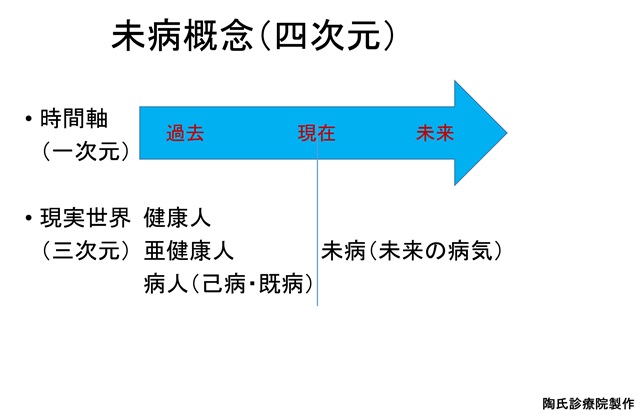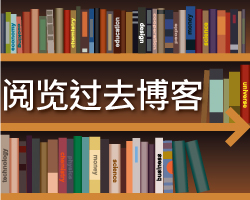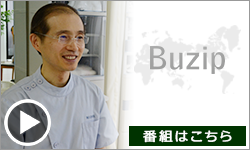2025-12-12
东瀛万事通・今日头条・中文導報・日本东方新报:北海道中国会举办第十二届总会&恳亲忘年会
2025-11-06
2025年北海道华侨华人春节联欢会盛大举行
2025-08-25
2025年“札幌中国节”成功举行 彩绘水墨画惊艳北海道 美声颂歌回响红砖广场
2025-07-31
陶永芳:我是世上最幸福的老人
2025-07-30
陶永芳:回想在日本住院的那些日子
2025-07-16
第2届全日本华侨华人业余高尔夫锦标赛&第11届北海道中国会杯高尔夫大会成功举行
2025-07-02
第60届中国人殉难者全道慰灵祭在北海道仁木町民中心举行
2024-12-16
肿瘤整合治疗联盟:第二届肿瘤整合治疗学术研讨会成功举办
2025-06-14
汗,是脾胃的镜子
2025-05-22
教你如何区分阴虚和阳虚,一学就会!
2025-02-24
艾灸最怕这一个字!90%的人做错,这样灸比吃补品更有效
2025-02-23
这些常见中药搭配,用对效果加倍
2025-02-02
中医和西医在治病原则区别
2025-02-01
李可老中医的一句话,拯救了无数肿瘤患者!
2025-01-26
仝小林院士:体病药论与治未病
2025-01-11
从五运六气看六经辨证
2023-12-06
黄帝内经治未病陶氏疗法在日本临床应用25年研讨⑪
2024-12-09
放几滴血,口腔溃疡就会痊愈,不信你试试!
2024-12-03
三魂七魄,看看哪个已不在您身上?
2024-12-02
中文导报 东瀛万事通 今日头条:北海道中国会举办第十一届总会&恳亲会
2024-11-09
艾烟,到底有没有害?
2024-10-13
经络不通,补什么都没用!只用一招:经络通畅百病消!
2024-10-08
你每天这样吸收大量阴气,怎么可能不生病?
2024-10-05
中医觉醒,认识经方——读懂《伤寒论》
2024-09-23
奥运体操全能王冈慎之助助阵:DENBA Moblie新品东京发表
2024-09-21
这样刮刮痧,活到八十八
2024-09-17
王振义被授予“共和国勋章”!他曾说:用循证研究证明中医药是个“宝”
2024-09-13
浙大调查发现:喜欢锻炼的人,患脑梗概率比久坐不动的人高数倍?
2024-09-04
“2024札幌中国节”成功举行 :彩绘水墨画惊艳北海道
2024-09-02
灸12原穴,断全身百病
1
黄帝内经治未病陶氏疗法在日本临床应用25年研讨⑤
未病概念的维度
中国 《黄帝内经素问·四气调神大论》“是故圣人不治已病治未病,不治已乱治未乱,此之谓也。夫病已成而后药之,乱已成而后治之,譬犹渴而穿井,斗而铸锥,不亦晚乎”中第一次提出了未病和治未病的概念。此处的已病和未病中的未病,是疾病的时空标准。
日本 日本未病学会对未病有两种看法:西医的未病,没有主观症状,但检查发现异常;东洋医学(中医)的未病,有主观症状,但检查没有异常。日本的未病治疗对象,是健康者和亚健康者。丢失了既病(已病)患者。所以日本的未病定义,仅仅以疾病发生的时间为标准的简单理解。
未病的时间标准(时间是一维・狭义低维度):未病按西医的人体有无临床症状和检查异常,分有病和无病(没有异常发现)。西医对把有自我症状无临床检查异常,或没有自我症状有临床检查异常的分类为未病(未形成疾病),把无自我症状和无临床检查异常的分类为健康。所以按时间标准分类,人类分已病、未病和健康者三类。
未病的时空标准 (时间加空间是四维・广义高维度):疾病(已病)是表示在过去的时间空间,因各种原因导致的身体阴阳平衡失调,所以任何已病都是过去式。从现在时空开始,任何人,包括已病都存在未来的疾病,简称未病。利用这样的概念,治未病可以成为针对所有人群的医疗行为。黄帝内经的“圣人不治已病治未病”指的是不治过去的疾病,而是治疗未来的疾病,即治未病。具体的就是中国现在执行的治未病的四字方针:未病先防、己病早治、既病防变、瘥后防复。
黄帝内经的下医治病是对疾病的医疗目标,中医养生是对产生疾病个人的目标,上医治国是社会(全人类)的共同最高目标。临床照顾的患者治未病是社会人员的局部,中医的治未病应该面向社会整体的服务范围,让己病和无病的所有社会人都能享受到中医治未病的智慧结晶。
Dimensions of the Concept of Preventive Treatment of Disease
In China, the ❝Yellow Emperor’s Inner Canon Suwen - Four Qi Regulating God's Great Theory❞ addresses the sage's approach to not treating the already sick but rather treating diseases before they manifest. It emphasizes not treating the already chaotic but addressing potential future chaos. This early mention of the concept of treating the not-yet-sick and the unhealthy highlights the importance of addressing issues before they fully develop. This approach, focusing on the time and space standards of disease, indicates a proactive stance in medical treatment.
In Japan, the Japan Mibyou (Preventive Treatment of Disease) Association recognizes two perspectives on the concept of not-yet-diseased: in Western medicine, it refers to cases where there are no subjective symptoms but examination reveals abnormalities; in Oriental medicine (Chinese medicine), it refers to cases where there are subjective symptoms but no abnormalities found in examinations. The Japanese approach to treating the not-yet-diseased primarily targets healthy and sub-healthy individuals, often overlooking those with pre-existing conditions. Thus, the Japanese definition of not-yet-diseased predominantly relies on the time criterion related to the onset of the disease.
The time standard of not-yet-diseased (one-dimensional and narrowly low-dimensional) in Western medicine differentiates between with-illness and without-illness based on the presence or absence of clinical symptoms and examination findings. Western medicine categorizes individuals with symptoms but no clinical abnormalities, or vice versa, as not-yet-diseased, and those with neither symptoms nor clinical abnormalities as healthy. Therefore, people are classified as diseased, not-yet-diseased, or healthy based on this temporal criterion.
The time-space criterion of not-yet-diseased (time plus space as a four-dimensional and generalized high dimensionality concept) implies that illness (already-disease) represents a past imbalance of yin and yang in the body due to various reasons. Therefore, any already-disease is past tense. From the present perspective, every person, including those already diseased, has the potential for future illness, thus considered not-yet-diseased. This concept enables the treatment of future diseases to become a medical practice applicable to all. The Yellow Emperor’s Inner Canon advocates not treating past diseases but focusing on future diseases, essentially treating the not-yet-diseased. In practice, this is implemented in China as a four-word guideline: prevent before occurrence, treat early, prevent changes in existing diseases, and prevent recurrence post-recovery.
The Yellow Emperor’s Inner Canon sets out the medical goal for treating diseases, Chinese Medicine targets the individual responsible for producing the disease, and Upper Medicine represents the collective highest goal for society (all of humanity). Clinical care for patients in curing future diseases represents a localized approach for social personnel, whereas Chinese medicine's treatment of future diseases should aim for a broader societal service scope. This allows all members of society, whether sick or not, to benefit from the wisdom inherent in Chinese medicine's approach to treating future diseases.
中国 《黄帝内经素问·四气调神大论》“是故圣人不治已病治未病,不治已乱治未乱,此之谓也。夫病已成而后药之,乱已成而后治之,譬犹渴而穿井,斗而铸锥,不亦晚乎”中第一次提出了未病和治未病的概念。此处的已病和未病中的未病,是疾病的时空标准。
日本 日本未病学会对未病有两种看法:西医的未病,没有主观症状,但检查发现异常;东洋医学(中医)的未病,有主观症状,但检查没有异常。日本的未病治疗对象,是健康者和亚健康者。丢失了既病(已病)患者。所以日本的未病定义,仅仅以疾病发生的时间为标准的简单理解。
未病的时间标准(时间是一维・狭义低维度):未病按西医的人体有无临床症状和检查异常,分有病和无病(没有异常发现)。西医对把有自我症状无临床检查异常,或没有自我症状有临床检查异常的分类为未病(未形成疾病),把无自我症状和无临床检查异常的分类为健康。所以按时间标准分类,人类分已病、未病和健康者三类。
未病的时空标准 (时间加空间是四维・广义高维度):疾病(已病)是表示在过去的时间空间,因各种原因导致的身体阴阳平衡失调,所以任何已病都是过去式。从现在时空开始,任何人,包括已病都存在未来的疾病,简称未病。利用这样的概念,治未病可以成为针对所有人群的医疗行为。黄帝内经的“圣人不治已病治未病”指的是不治过去的疾病,而是治疗未来的疾病,即治未病。具体的就是中国现在执行的治未病的四字方针:未病先防、己病早治、既病防变、瘥后防复。
黄帝内经的下医治病是对疾病的医疗目标,中医养生是对产生疾病个人的目标,上医治国是社会(全人类)的共同最高目标。临床照顾的患者治未病是社会人员的局部,中医的治未病应该面向社会整体的服务范围,让己病和无病的所有社会人都能享受到中医治未病的智慧结晶。
Dimensions of the Concept of Preventive Treatment of Disease
In China, the ❝Yellow Emperor’s Inner Canon Suwen - Four Qi Regulating God's Great Theory❞ addresses the sage's approach to not treating the already sick but rather treating diseases before they manifest. It emphasizes not treating the already chaotic but addressing potential future chaos. This early mention of the concept of treating the not-yet-sick and the unhealthy highlights the importance of addressing issues before they fully develop. This approach, focusing on the time and space standards of disease, indicates a proactive stance in medical treatment.
In Japan, the Japan Mibyou (Preventive Treatment of Disease) Association recognizes two perspectives on the concept of not-yet-diseased: in Western medicine, it refers to cases where there are no subjective symptoms but examination reveals abnormalities; in Oriental medicine (Chinese medicine), it refers to cases where there are subjective symptoms but no abnormalities found in examinations. The Japanese approach to treating the not-yet-diseased primarily targets healthy and sub-healthy individuals, often overlooking those with pre-existing conditions. Thus, the Japanese definition of not-yet-diseased predominantly relies on the time criterion related to the onset of the disease.
The time standard of not-yet-diseased (one-dimensional and narrowly low-dimensional) in Western medicine differentiates between with-illness and without-illness based on the presence or absence of clinical symptoms and examination findings. Western medicine categorizes individuals with symptoms but no clinical abnormalities, or vice versa, as not-yet-diseased, and those with neither symptoms nor clinical abnormalities as healthy. Therefore, people are classified as diseased, not-yet-diseased, or healthy based on this temporal criterion.
The time-space criterion of not-yet-diseased (time plus space as a four-dimensional and generalized high dimensionality concept) implies that illness (already-disease) represents a past imbalance of yin and yang in the body due to various reasons. Therefore, any already-disease is past tense. From the present perspective, every person, including those already diseased, has the potential for future illness, thus considered not-yet-diseased. This concept enables the treatment of future diseases to become a medical practice applicable to all. The Yellow Emperor’s Inner Canon advocates not treating past diseases but focusing on future diseases, essentially treating the not-yet-diseased. In practice, this is implemented in China as a four-word guideline: prevent before occurrence, treat early, prevent changes in existing diseases, and prevent recurrence post-recovery.
The Yellow Emperor’s Inner Canon sets out the medical goal for treating diseases, Chinese Medicine targets the individual responsible for producing the disease, and Upper Medicine represents the collective highest goal for society (all of humanity). Clinical care for patients in curing future diseases represents a localized approach for social personnel, whereas Chinese medicine's treatment of future diseases should aim for a broader societal service scope. This allows all members of society, whether sick or not, to benefit from the wisdom inherent in Chinese medicine's approach to treating future diseases.








